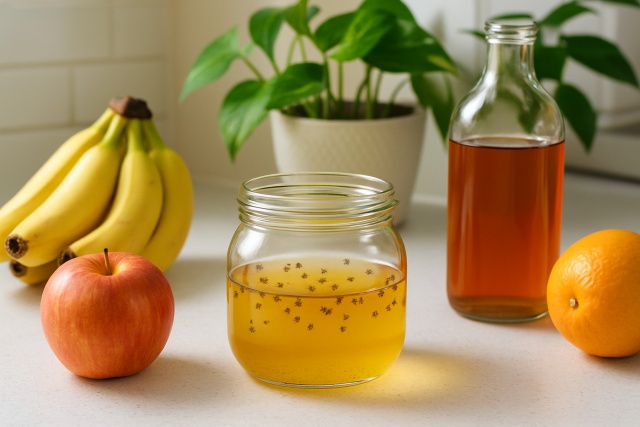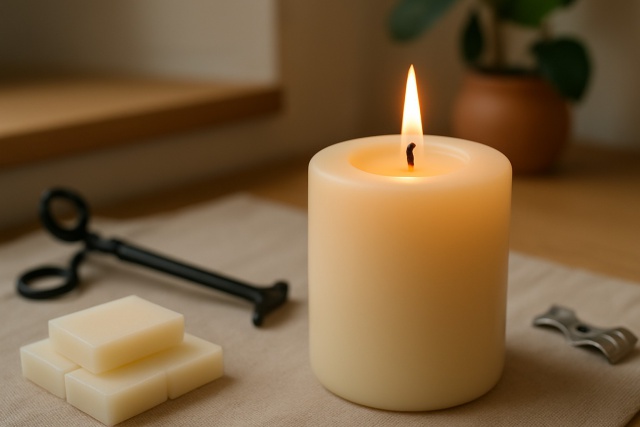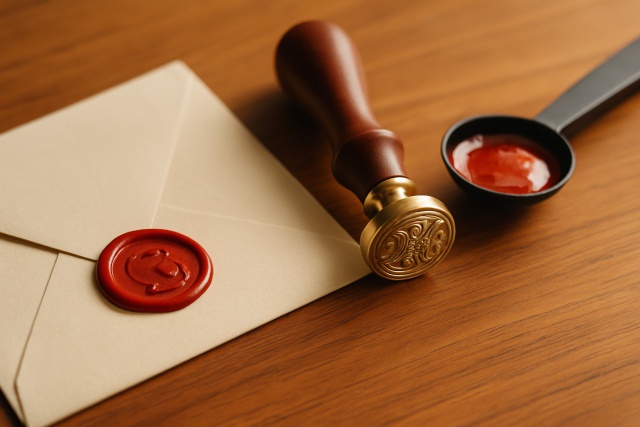How Much PSI to Power Wash House Safely Without Damage
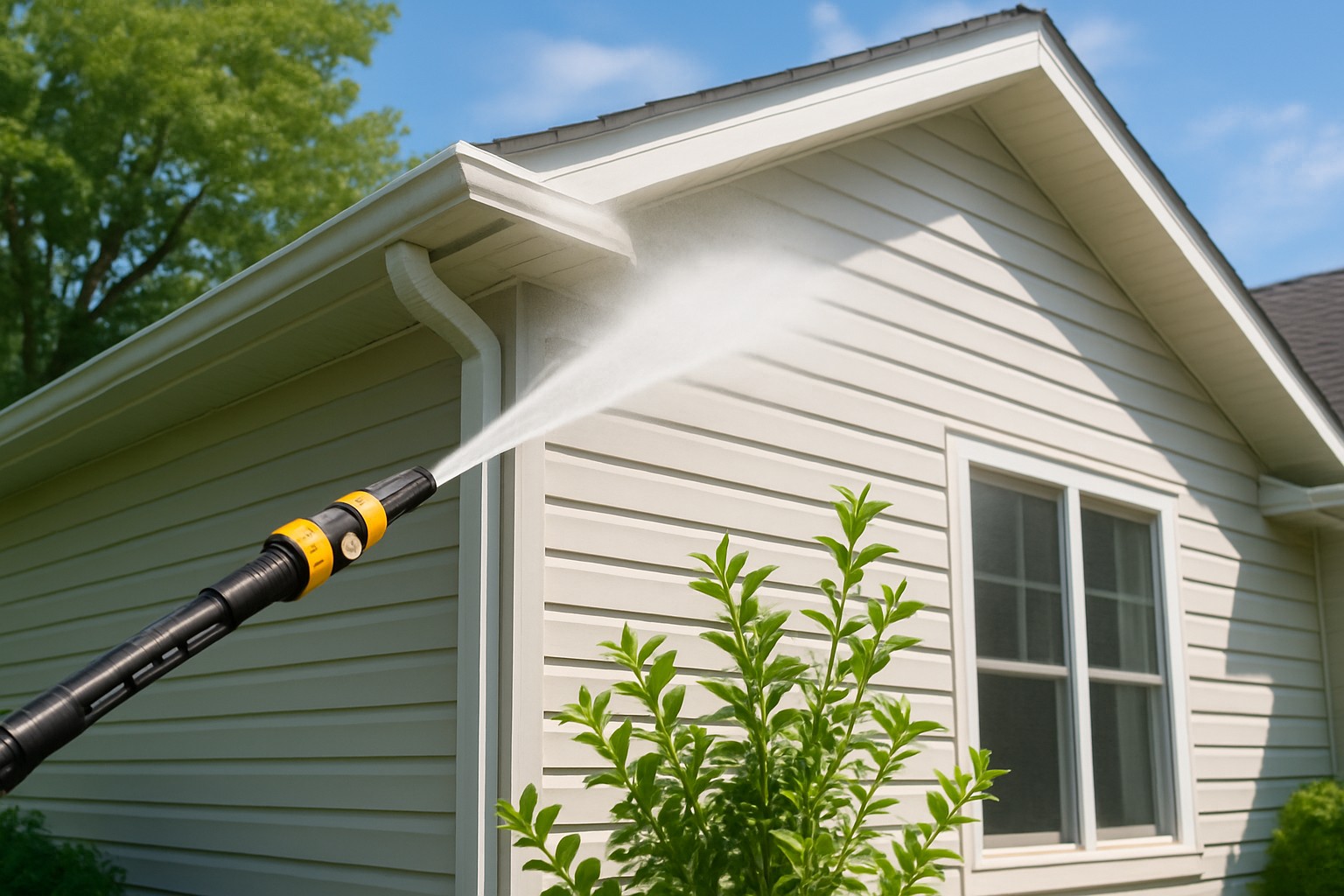
This guide helps you pick the right pressure and methods to power wash your home's exterior safely and effectively.
- Discover the safe PSI levels for materials like vinyl, wood and stucco to avoid costly mistakes.
- Learn how your choice of nozzle and spray distance affects cleaning power while protecting surfaces.
- Master power washing techniques that remove dirt without leaving streaks or marks.
- Watch out for common slip-ups like cranking up the pressure too high on delicate surfaces — been there done that.
- Know when a job is beyond DIY and it is smarter to call in the pros for a stress-free clean.
Power washing your house is an excellent way to give its exterior a fresh bright look by blasting away dirt, mold and mildew and all the other gunk that tends to build up over time. Knowing how much PSI to power wash a house is absolutely important—you want to get the job done without accidentally damaging delicate surfaces. Too much pressure can chip your paint or dent your siding and wear away wood like nobody's business. Too little might just leave stubborn grime waving back at you.
What PSI Really Means and the Nitty-Gritty of How Power Washers Get the Job Done
PSI stands for pounds per square inch and it tells you how much water pressure a power washer is packing. This pressure is vital for breaking up dirt and grime stuck on surfaces. Power washers crank up motors or engines to force water through a tiny nozzle and create a powerful spray. Along with PSI, gallons per minute (GPM) measure how much water is flowing and affect how well the cleaning gets done.
- PSI tells you just how fiercely the water is sprayed and is vital for breaking up stubborn dirt on surfaces.
- The water pressure helps wash away grime, mold and algae with more oomph.
- GPM, or gallons per minute, gives you the lowdown on how much water flows and affects how much grime gets rinsed off.
- PSI typically ranges from 1300 to over 4000 depending on the task. Cleaning your patio is not the same as blasting grease off a driveway.
- The size of the nozzle and the spray angle both affect the pressure and coverage area.
- A narrower spray angle increases the pressure while a wider angle spreads water over a bigger area but with less muscle behind it.
Best PSI Levels for Power Washing Various House Surfaces
When it comes to power washing your home, getting the PSI just right can make all the difference—too little and you might not budge the grime, too much and you risk turning your siding into Swiss cheese. Let’s dive into the ideal pressure levels for different surfaces, so you can tackle dirt without a hitch.
Different exterior materials can take varying amounts of PSI without breaking a sweat. Choosing the right pressure not only gets the job done efficiently but also keeps your surface and finish safe from any unwanted damage.
| House Surface Type | Recommended PSI Range | Cleaning Tip | Damage Risk Level |
|---|---|---|---|
| Vinyl Siding | 1300 - 1600 PSI | Stick with a 25-degree nozzle and keep some distance to avoid accidentally gouging the surface | Low |
| Wood (softwood) | 500 - 600 PSI | Gently apply a mild detergent and steer clear of blasting it directly with high pressure — it’s a delicate dance here | High |
| Brick and Stone | 1500 - 2000 PSI | Opt for a 25-40 degree nozzle and don’t linger too long in one spot, or you might end up with some unwanted wear | Low-Moderate |
| Stucco | 800 - 1400 PSI | Go for a wider spray angle and always test a small patch first to avoid surprises down the line | High |
| Aluminum Siding | 1500 - 2000 PSI | Keep that nozzle moving steadily and hold it at a safe distance — patience pays off | Moderate |
| Painted Surfaces | 1200 - 1500 PSI | Before diving in, see how the paint reacts and stick to low pressure to keep things intact | High |
Materials like vinyl siding are known to be tough, handling higher PSI levels without breaking a sweat due to their solid makeup. More delicate surfaces such as wood or stucco can react badly if you crank up the pressure too much. Too high a PSI can peel paint off, dent soft wood fibers, or wear away stucco surfaces.
Key Factors to Keep in Mind When Picking the Right PSI for Power Washing Your Home
Picking the right PSI is about more than just the surface type. There are a few other things to consider. You have the condition of the surface itself and how stubborn the stains are. You should also think about the environment around you and the details of the equipment you are using.
- The age and condition of the surface usually play a big part in determining just how much pressure it can safely take without throwing a fit.
- Different stubborn stains often call for varying PSI levels to get the job done right.
- Surfaces that have been treated or painted before might have fragile layers underneath that don’t handle high pressure very kindly.
- Weather exposure and climate definitely weigh in on how stains accumulate and impact the surface over time.
- Whether the washer runs on electricity or gas influences not only the PSI you can expect but also how easy it is to lug around.
- The type of nozzle and the spray angle make a world of difference in the actual pressure that ends up hitting the surface.
Choosing Between Low and High PSI Weighing the Benefits and Drawbacks
- Lower PSI settings usually play nice with delicate surfaces, giving you a much gentler touch and reducing the odds of leaving behind any unwanted marks. The trade-off is that you might find yourself spending a bit more time and making several passes before the job’s fully done.
- Higher PSI powers through tough stains and hard surfaces like a champ, cleaning quickly and efficiently. Just be careful if you’re not mindful or you’re working with sensitive materials, it can cause some trouble.
How to Power Wash Your House Safely (Without Turning Your Wall Into a Waterfall)
Power washing safely is all about striking the right balance between protecting your surfaces and getting them clean. By minding your distance, picking the perfect nozzle and giving the pressure a little test run you’ll avoid pesky streaks and unintended damage.
Take a good, careful look at your home's exterior to spot any fragile spots or damage because it is better to be safe than sorry.
Pick a PSI and nozzle tip that makes sense for the job, usually starting low for those more sensitive surfaces since you do not want to go all in right away.
Give it a quick test spray on a small, out-of-the-way spot to see how the pressure affects the surface. Think of it as a little dress rehearsal.
Hold the nozzle about 6-12 inches away from the surface to prevent any damage because nobody likes accidental gouges.
Keep your hand steady and sweep the nozzle in smooth, even strokes to avoid streaks or those pesky spray marks that like to show up uninvited.
For stubborn grime, use detergents made just for power washers and let them soak in for the recommended time. Patience really pays off here.
Rinse everything thoroughly with clean water to wash away all the soap and any leftover gunk since you do not want residue sticking around like an unwanted guest.
Let the cleaned areas dry fully before moving on to any treatments or painting because rushing this step can spoil all your hard work.
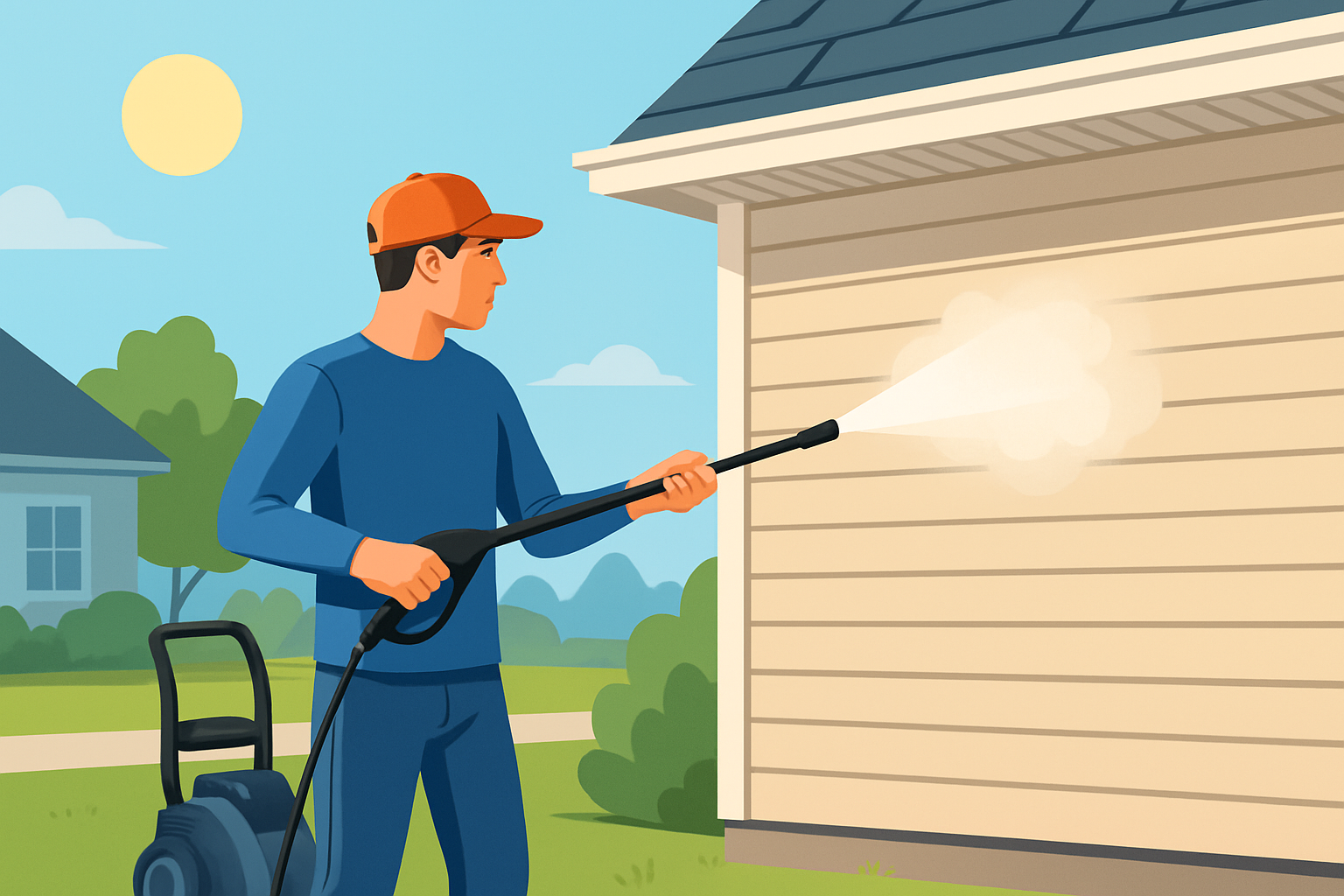
Frequent Mistakes to Watch Out For When Power Washing Your Home (So You Don’t End Up Making Things Worse)
Many homeowners unintentionally cause damage because they rush through the job or overlook key steps. It’s common to crank up the pressure too high or stand too close. They may also forget to shield nearby plants and their own safety. Watching for these pitfalls can really make a difference.
- Cranking up the PSI to the max without considering the surface you are blasting.
- Skipping pressure tests and diving headfirst into full-power washing like it’s no big deal.
- Going full throttle on delicate wood or older paint finishes without dialing down the pressure or tweaking your technique. It is a recipe for disaster.
- Forgetting to cover nearby plants, windows, and electrical outlets before unleashing that high-pressure spray invites trouble.
- Showing up without the right safety gear—goggles, gloves, boots—and hoping for the best, which usually isn’t a great bet.
"Dialing in your power washer's pressure to match the surface, and picking the right nozzle, often turns out to be the best way to dodge costly mistakes. A lot of people think cranking up the pressure means cleaner results, but honestly, it is usually the right technique that steals the show." — James Connor, Professional Power Washing Specialist
Safety Tips and Maintenance Advice for Power Washing Equipment
When it comes to power washing, a little know-how can go a long way in keeping things safe and running smoothly. Whether you are a weekend warrior or a seasoned pro, these tips will help you avoid common pitfalls and get the most out of your gear. From handling the equipment with care to regular upkeep, it’s really about staying one step ahead to prevent mishaps and costly repairs down the road.
Taking good care of your power washer isn’t just about playing it safe—it’s also the best way to keep the machine humming along smoothly for years to come.
- Always suit up with goggles and gloves to protect your eyes and hands from flying debris and the blast of high-pressure water.
- Give those hoses, connections and nozzles a thorough check before each use because spotting leaks or wear early can save you headaches later.
- Take a moment to adjust your power washer’s PSI setting to fit the job. Using too much or too little pressure can cause problems.
- After finishing, clean the nozzles to prevent clogs and keep your spray steady next time.
- Store your gear in a dry cozy spot away from extreme temperatures since no one likes a cranky power washer.
- Keep up with regular maintenance like clockwork. This includes oil changes for gas models and electrical checkups for electric units to ensure everything runs smoothly.
When It Might Be Time to Call in a Pro for Power Washing
It’s just wiser to call in the pros, who not only know how much PSI to power wash a house but also come armed with the right tools and the know-how to tackle the job both safely and effectively.
- Your home has tricky hard-to-reach spots that might be unsafe to tackle on your own.
- Your house features delicate historical or decorative surfaces that call for a gentle careful touch.
- Heavy mold, algae or stubborn paint buildup have taken hold—things your usual DIY gear can’t handle.
- You lack the experience or the right tools, or don’t feel confident enough to clean without risking trouble.
- You’d rather have your work backed by a solid warranty or want peace of mind with protection against accidental damage to your property.
Questions & Answers
What is a safe starting PSI for cleaning standard vinyl siding?
A good starting point for vinyl siding usually falls between 1,300 and 1,600 PSI. It is a smart move to kick off with a wider spray tip like a 40-degree one and always test on a small hidden spot first. This range packs enough punch to clear dirt and mildew without causing cracks, dents or water seepage behind the siding.
Can I power wash my old, weathered wood deck?
Yes but tread lightly. Weathered wood is delicate and can get damaged quicker than you might expect. Stick to a low PSI setting around 500 to 600 paired with a wide 40-degree or fan tip. Keep that nozzle moving and hold it at least 12 inches away. Remember you want to clean the wood not carve it! Applying a deck cleaner before you start often means you won’t have to crank up the pressure as much.
What is the most common mistake people make with PSI?
One classic blunder is assuming higher pressure means a deeper clean. Piling on the PSI with delicate surfaces like wood, stucco or old paint often backfires and causes damage. More often than not, effective cleaning comes down to the right technique or nozzle choice and sometimes adding a bit of detergent—not just brute force.
Should I use a different nozzle for different parts of my house?
Absolutely. Nozzles are your secret weapon in controlling spray pattern and how much pressure lands where. A wide 40-degree nozzle is great for delicate surfaces and when you’re applying detergent. For general siding cleaning a 25-degree nozzle usually does the trick. Just steer clear of the zero-degree red nozzle on house surfaces; that one is like a pressure cannon and can easily cause damage.
When should I definitely hire a professional instead of doing it myself?
If you have a multi-story home where safely reaching higher spots feels like a high-wire act or if you’re dealing with delicate surfaces like antique wood or soft stucco, it’s wise to call in a pro. Also, when stubborn mold or tough stains are hanging around for the long haul, professionals bring commercial-grade gear and know-how that help you avoid costly mishaps.



